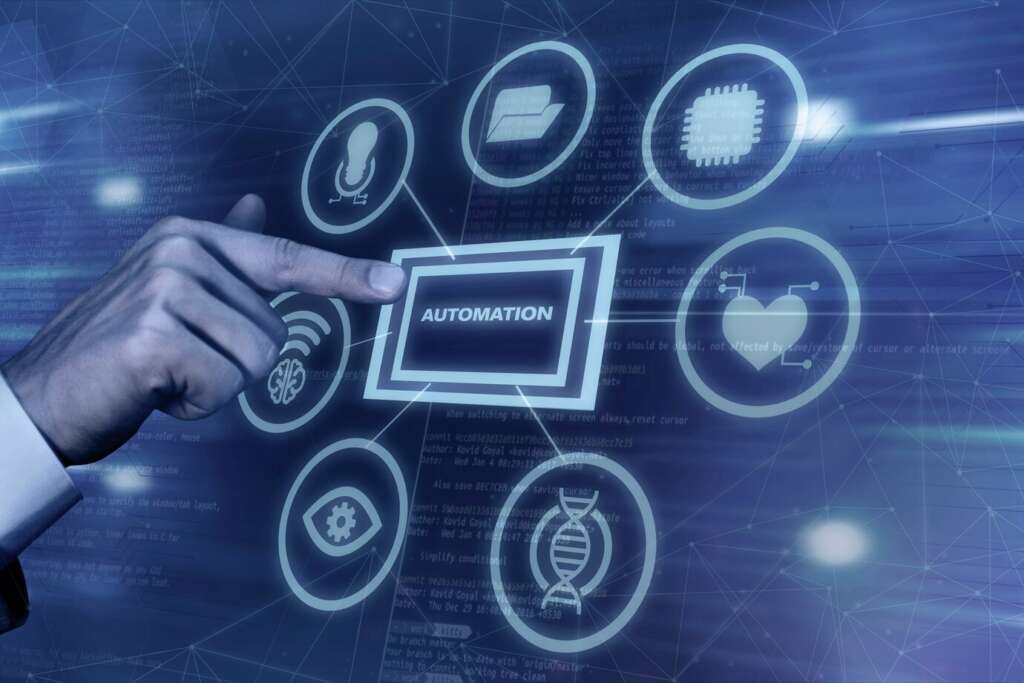Automation has emerged as a game-changer in today’s fast-paced world, revolutionizing industries and transforming the way businesses operate. In simple terms, automation refers to the use of technology and machines to perform tasks that were previously done by humans. From manufacturing to finance, mechanisation has found its way into almost every sector, streamlining processes, increasing efficiency, and driving innovation.
The Benefits of Automation
The benefits of automation are manifold and extend far beyond the realm of time and cost savings. Enhanced productivity is one of the main benefits.
By automating repetitive and mundane tasks, businesses can free up their workforce to focus on more value-added activities, such as strategic decision-making and creative problem-solving. This not only leads to higher job satisfaction but also enables companies to achieve higher levels of efficiency and output.
Mechanisation also brings about improved accuracy and reduced errors. Unlike humans, machines are not prone to fatigue, distractions, or human errors. By relying on automation, businesses can ensure consistent and precise results, minimizing the risk of costly mistakes. This not only enhances the quality of products and services but also boosts customer satisfaction and loyalty.
Moreover, mechanisation enables businesses to achieve scalability and flexibility. With the ability to handle large volumes of work quickly and efficiently, automation allows companies to scale their operations without significant resource investments. This is particularly advantageous in industries with fluctuating demands, as automation can easily adapt to changing workloads, ensuring smooth operations and optimal resource allocation.

Automation in Different Industries
The impact of automation can be seen across various industries, each reaping its unique set of benefits. In manufacturing, for example,Mechanisation has revolutionized production lines, optimizing processes, and improving overall efficiency. From robotic arms assembling products with precision to automated quality control systems, manufacturers have been able to accelerate production, reduce costs, and ensure consistent product quality.
The finance industry has also embraced Mechanisation, particularly in the form of robotic process automation (RPA). RPA has transformed routine tasks such as data entry, invoice processing, and report generation, freeing up finance professionals to focus on more strategic activities like financial analysis and risk management. By automating these repetitive tasks, finance companies have seen significant time savings, reduced errors, and improved compliance.
In the healthcare sector, mechanisation has played a critical role in enhancing patient care and safety. Automated systems for medication dispensing, patient monitoring, and diagnostic testing have not only improved accuracy but also enabled healthcare professionals to provide timely and personalized care. Mechanisation has also proved invaluable in streamlining administrative tasks, allowing doctors and nurses to devote more time to patient care.

The Impact of Automation on the Workforce
While mechanisation brings numerous benefits, it also raises concerns about its impact on the workforce. Some fear that Mechanisation will lead to widespread job displacement and unemployment. However, history has shown that automation tends to transform jobs rather than eliminate them entirely. As certain tasks become automated, new roles and opportunities arise, requiring human expertise and creativity.
Mechanisation often leads to the creation of higher-skilled jobs that require critical thinking, problem-solving, and technological proficiency. For example, as machines take over mundane tasks, employees can focus on complex problem-solving, customer service, and innovation. Moreover, the integration of mechanisation in businesses necessitates a skilled workforce to design, implement, and maintain these automated systems, creating new job opportunities in the process.
To effectively manage the workforce transition, it is crucial for businesses and governments to invest in reskilling and upskilling programs. By equipping employees with the necessary skills to work alongside automated systems, companies can ensure a smooth transition and leverage the full potential of mechaniasation. Governments can play a role by providing training incentives and fostering collaboration between educational institutions and businesses to meet the evolving demands of the job market.

Types of Automation Technologies
Mechanisation encompasses a wide range of technologies, each suited for different tasks and industries. Robotic mechanisation involves the use of robots or robotic arms to perform physical tasks, such as assembly, packing, and material handling. These robots can be programmed to work autonomously or collaboratively with humans, enhancing productivity and reducing physical strain.
Cognitive mechanisation, on the other hand, involves the use of artificial intelligence (AI) and machine learning algorithms to automate cognitive tasks that traditionally required human intelligence. This includes natural language processing, data analysis, and decision-making. By leveraging cognitive automation, businesses can process vast amounts of data, gain valuable insights, and make informed decisions in real-time.
Another type of mechanisation technology is process automation, often implemented through the use of software bots or robotic process automation (RPA). Process mechansation involves automating repetitive and rule-based tasks, such as data entry, data extraction, and report generation. RPA can be applied across various departments, from finance and HR to customer service, streamlining workflows and reducing manual effort.
Examples of Successful Automation Implementation
Numerous companies have successfully implemented automation to enhance their operations and drive innovation. One such example is Amazon, which has revolutionized the e-commerce industry with its highly automated warehouses. By utilizing a vast network of robots and automated systems, Amazon has been able to process and ship millions of products efficiently, ensuring fast and accurate deliveries to customers.
Another notable example is Tesla, which has transformed the automotive industry through its advanced automation technologies. Tesla’s Gigafactories employ robots and automated systems to manufacture electric vehicles at an unprecedented scale. This mechanisation has not only allowed Tesla to increase production and meet the growing demand for electric vehicles but also enabled the company to continuously innovate and improve its products.
In the healthcare sector, Intuitive Surgical has made significant advancements with its robotic surgical systems. These systems allow surgeons to perform minimally invasive procedures with enhanced precision and control. By automating certain aspects of surgery, Intuitive Surgical has improved patient outcomes, reduced recovery times, and opened up new possibilities for complex procedures.
Challenges and Risks of Automation
While mechanisation offers numerous benefits, it is not without its challenges and risks. One of the main concerns is the initial investment required to implement automation systems. Depending on the complexity and scale of mechanisation, businesses may need to allocate significant resources for technology acquisition, infrastructure setup, and employee training. However, it is important to note that the long-term benefits of mechanisation often outweigh the initial costs.
Another challenge is the potential disruption to existing workflows and processes. Introducing automation may require businesses to redesign their operations and workflows to effectively integrate automated systems. This can be a complex and time-consuming process, requiring careful planning, stakeholder engagement, and change management strategies.
Moreover, automation raises ethical considerations, particularly in industries that heavily rely on human decision-making. For example, in the healthcare sector, the use of AI algorithms to diagnose diseases raises questions about the trustworthiness and accountability of automated systems. Striking the right balance between mechanization and human intervention is crucial to ensure ethical decision-making and maintain public trust.
How to Implement Automation in Your Business
It takes significant planning and thought to use mechanisation in your company. The following steps will help you navigate the process:
Identify tasks and processes suitable for mechanisation: Begin by assessing your current workflows and identifying tasks that are repetitive, time-consuming, or prone to errors. These are the perfect jobs to automate.
Evaluate available mechanisation technologies: Research and explore different automation technologies that align with your business needs. Consider factors such as scalability, compatibility with existing systems, and ease of implementation.
Develop a roadmap: Create a detailed plan outlining the steps and timeline for implementing automation. Determine possible hazards and difficulties and come up with plans to lessen them.
Secure executive buy-in and employee involvement: Mechanisation implementation requires support from top management and the active involvement of employees. Communicate the benefits of automation to stakeholders and involve employees in the decision-making process.
Pilot and test mechanisation solutions: Start with a small-scale pilot project to test the effectiveness and feasibility of automation. Gather feedback from employees and make necessary adjustments before scaling up.
Provide training and support: Ensure that employees receive adequate training to effectively use and interact with automated systems. Offer ongoing support and address any concerns or challenges that may arise during the transition.
Monitor and optimize: Continuously monitor the performance of automated systems and identify areas for optimization. Regularly assess the impact of automation on productivity, accuracy, and customer satisfaction to make necessary improvements.
Automation and Innovation
Mechanisation and innovation go hand in hand, driving each other’s success. By automating repetitive and mundane tasks, businesses can free up their workforce to focus on creative problem-solving and innovation. As technology advances, automation opens up new possibilities for businesses to streamline processes, explore new markets, and develop innovative products and services.
Mechanisation also enables businesses to embrace digital transformation, leveraging emerging technologies such as AI, machine learning, and the Internet of Things (IoT). These technologies, when integrated with mechanisation , can unlock new opportunities for data-driven insights, predictive analytics, and personalized customer experiences. Through automation-driven innovation, businesses can stay ahead of the competition and thrive in a rapidly evolving digital landscape.
The Future of Automation
The future of mechanisation is bright, with advancements in technology and the increasing need for efficiency and productivity. As AI continues to evolve, automation will become more intelligent and capable of handling complex tasks that were previously considered impossible to automate. The integration of automation with emerging technologies will further revolutionize industries, paving the way for autonomous vehicles, smart cities, and intelligent manufacturing.
However, it is important to approach automation with a balanced perspective. While automation offers tremendous potential, it should be implemented thoughtfully, taking into consideration the social and economic implications. Governments, businesses, and educational institutions must collaborate to ensure a smooth transition, equipping the workforce with the necessary skills to thrive in an automated world.
At the End
Automation has become a catalyst for efficiency and innovation, transforming industries and reshaping the future of work. From manufacturing to healthcare, businesses across various sectors are harnessing the power of automation to streamline processes, increase productivity, and drive growth. While automation presents challenges and risks, its potential to revolutionize industries and create new opportunities cannot be ignored.
As businesses embrace automation, it is crucial to strike a balance between human expertise and technological advancements. By investing in reskilling and upskilling programs, businesses can ensure a smooth transition and unlock the full potential of automation. The future of automation holds immense promise, and it is up to us to harness its power responsibly, driving efficiency, innovation, and sustainable growth.







Popular Comments